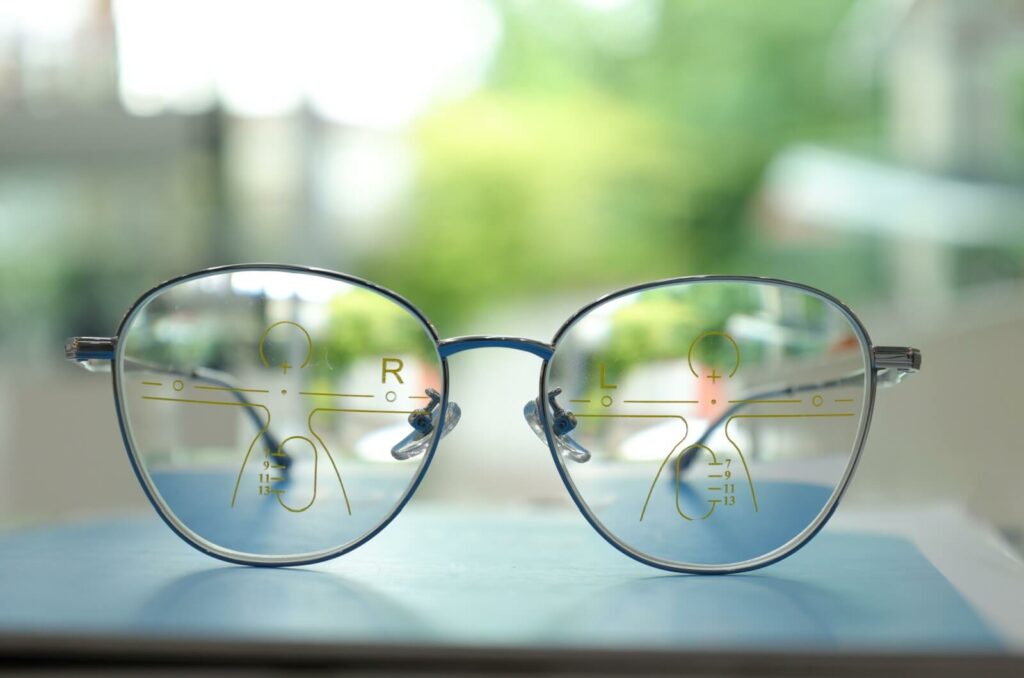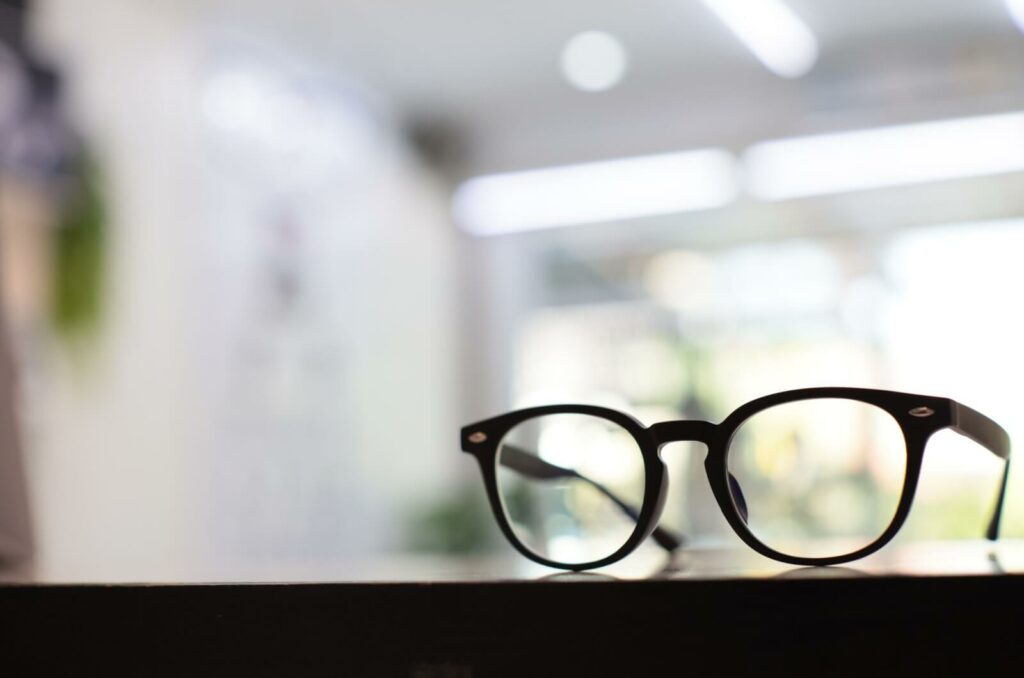The need to switch between reading glasses and distance glasses can feel like a never-ending cycle. While vision changes are a natural part of growing older, squinting at menus or signs doesn’t have to be.
Progressive eyeglasses are multifocal lenses that offer a smooth transition between different lens powers for distance, intermediate, and near vision. These lenses can provide convenience and clarity of sight, allowing you to navigate your day more effortlessly, whether you’re reading your favourite book or enjoying a scenic view.
A Brief History of Eyeglasses
Eyeglasses have evolved significantly over the centuries, but their basic idea has remained the same. By using lenses to change how light enters the eye, eyeglasses can correct refractive errors, including:
- Myopia (nearsightedness)
- Hyperopia (farsightedness)
- Astigmatism
From the rudimentary spectacles of the 13th century to modern-day optical wonders, eyeglasses have always been about enhancing life by sharpening vision. While single-vision lenses are excellent for correcting vision at one distance, our eyes are complicated and might need different prescriptions at different distances.
This is the domain of bifocal and trifocal lenses. These lenses are divided into 2 or 3 areas with different prescriptions, each denoted by a line. Multifocal lenses are great at letting you see well at different distances, though they do come with some drawbacks.
Progressive lenses, often referred to as “no-line bifocals,” are similar to other multifocal lenses. However, progressive lenses offer a smooth, gradual change in lens strength, providing a more natural visual experience. They eliminate the “jump” often experienced with bifocals or trifocals, offering a blend of near, intermediate, and distance prescriptions in one seamless lens.
Who Are Progressive Eyeglasses For?
Progressive eyeglasses are an excellent choice for adults with presbyopia. Presbyopia is a common vision change that many of us start experiencing in our early to mid-40s when we notice that it’s getting harder to see the fine print on a menu.
This happens because, as we age, the lens in our eyes becomes less flexible, making it more difficult to focus on nearby objects. Unlike nearsightedness or farsightedness, which are about the shape of your eyeball being irregular, presbyopia is just a natural part of getting older.
Many people manage this condition with reading glasses, but presbyopia can also occur alongside other vision problems. When objects are blurry far away and up close, progressive lenses helpbridge the difference without the need for multiple glasses.
How Do Progressive Eyeglasses Work?
At first glance, progressive lenses may look like regular single-vision lenses. However, beneath their surface lies a sophisticated design. The top portion of the lens is crafted for distance vision, the middle for intermediate vision, and the bottom for close-up tasks like reading. This design allows wearers to enjoy a full range of vision without interruption.
You’ll have to train yourself to use the bottom part of the lens for reading and switch to the top to look at something far away, but this is generally a natural movement so it shouldn’t be difficult to adjust to.

Benefits of Progressive Lenses
The choice between progressive lenses and traditional bifocals or trifocals ultimately comes down to personal preference and specific visual needs. Let’s break it down:
No Distracting Lines
One of the most appealing features of progressive lenses is the absence of distracting lines across the lens surface. Traditional bifocals and trifocals have visible segments that can disrupt your vision, making transitions between different distances abrupt and jarring.
In contrast, progressive lenses provide a smooth, continuous transition from near to far vision. This offers a wider field of vision when you need it.
Say Goodbye to Multiple Glasses
At their core, progressive lenses can serve as a single solution for multiple vision needs. Instead of digging into your bag to swap from the day-to-day glasses to your reading glasses, you’re already wearing them!
Anyone who works in a job that requires a lot of paperwork knows the frustration of repeatedly removing their glasses every time they look up from their desk. Progressive lenses can eliminate this problem—and many like it.
A More Youthful Look
Some people hesitate to wear bifocals or trifocals because they believe these glasses make them look older. Instead, they struggle through the day or pretend the problem isn’t there.
Progressive lenses can offer a more youthful aesthetic. Though your personal style is subjective, it’s better to have glasses that make you feel comfortable than ones that make you feel self-conscious.
Caring for Your Glasses
Progressive eyeglasses are an investment in your future. Proper maintenance lets them serve you well for years to come. Here are a few tips to keep any of your glasses in good condition:
- Regular cleaning: Use a microfiber cloth and cleaning solution specifically designed for lenses. Avoid paper towels or clothing, which can scratch the surface.
- Proper storage: When not in use, store your glasses in a hard case to protect them from dust and accidental drops.
- Routine checkups: Regular visits to your optometrist for eye exams help your prescription remain accurate.
See the World with Confidence
Eyeglasses have come a long way since their invention, and progressive lenses are just the start. If you’re ready to see eye care in a new light, Maple Ridge Eye Care is here to help. Our team of dedicated optometrists provides personalized consultations and recommendations for the lenses to fit your lifestyle.
Book an appointment with us today and take the first step towards clearer, more comfortable vision!


